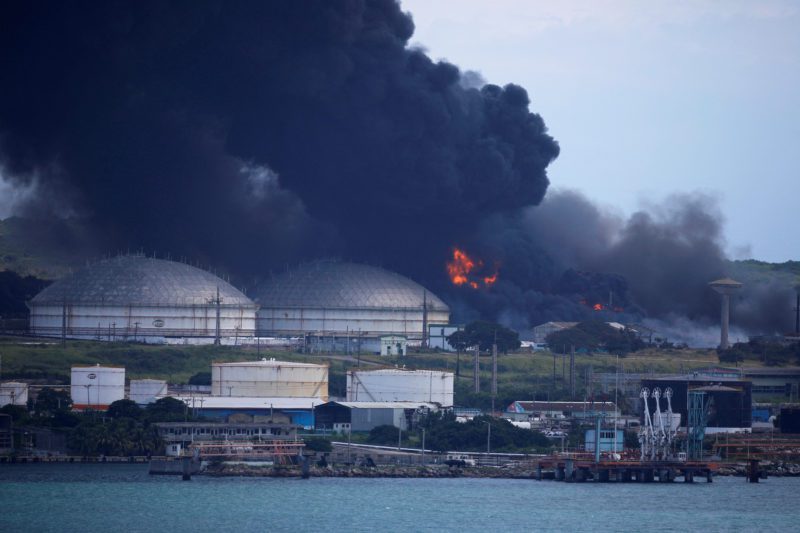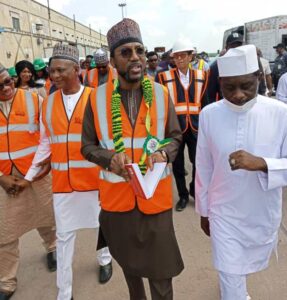In spring, a little more than 400 years after the original Mayflower set sail across the Atlantic Ocean with roughly thirty crew members and one hundred pilgrims, the historic ship’s successor launched westward from Plymouth, England. This modern voyage involved fewer passengers. Zero, in fact.
When the Mayflower Autonomous Ship, propelled primarily by renewable sources, reached the shore of North America roughly six weeks after setting off, it became the first fully autonomous commercial vessel to complete a transatlantic crossing. “If anything, the Mayflower shows there is still space for exploration,” says Brett Phaneuf, whose marine research nonprofit, ProMare, managed the initiative, with support from IBM. Instead of a weathered captain, it was a complex system of sensors, cameras, and artificial-intelligence commands that navigated the 50-foot-long trimaran. And where crew members might have slept, eaten, and used the facilities, a cargo bay housed 1,500 pounds of scientific gear. The venture represents a full reimagining of how a ship functions, propels itself through the water, and stores freight.
“Studies show that human error is responsible for around 70 percent of maritime accidents.”
Across the world, the autonomous revolution has taken to the high seas, quietly surpassing better-known efforts on land. Along the Gulf Coast, remote-controlled tugboats are pushing oil barges. In Norway, the world’s first fully electric self-propelled container ship will soon be transporting fertilizer through the fjords with only a skeleton crew (and eventually none at all). A Japanese freight company recently sent a 313-foot uncrewed vessel through 236 miles of crowded coastal waters. The Mikage even docked itself, with the aid of drones, at its final destination. Digitization is revolutionizing maritime operations, creating new opportunities for both transoceanic and domestic shipping that could reduce human risk, environmental harm, and logistical inefficiencies. Perhaps even more significant, experts say, these developments are prompting companies and governments to rethink how they transport goods and deliver services. “We’re changing how we interact with and benefit from our waterways,” says Moran David, chief commercial officer of Boston-based Sea Machines, which is building autonomous command-and-control technology as well as long-range computer-vision programs.
As in many other areas of society, the last few years have hit fast-forward on advancements in maritime enterprise. Market-research firm Thetius forecasts that the global maritime digital-technology industry will be worth $345 billion by the end of the decade. Demand for innovation is largely a response to supply-chain vulnerabilities and labor shortages due to the pandemic, war in Europe, and recent climate-related disasters. During lockdowns, crews have sometimes been stuck at sea for up to a year, with ports unable to process freight when workers became ill. Meanwhile, the pool of qualified seafarers has been shrinking rapidly. The solutions to each of these issues are multifaceted, but relying more on water transportation and automation will be key to building supply-chain resiliency and efficiency.
“Experts say it will also open a new market, as freight haulers migrate from land to water.”
Of course, with new technology comes new risks—and new regulations. “Autonomous shipping is not about technology anymore; it’s a matter of willingness,” says Phaneuf. Just as self-driving cars have faced many setbacks, self-driving seaborne craft are likely to encounter their own snags. For instance, how do you resolve gaps in satellite connectivity in the middle of the ocean? Who is liable in the event of an accident? Will piracy migrate from attacks on the open seas to hacking? The biggest threat is the water itself. Unlike roadways, which are highly structured grids, the ocean is inherently corrosive and always changing in unpredictable ways. For autonomous shipping to expand from limited applications to ubiquity will require significant political and commercial investment.
Experts say the immediate future of shipping innovation will likely follow a trajectory similar to that of vehicles. First, there will be driver-assisted applications. Then remote-controlled coastal uses, followed by remote-controlled ocean crossings, and, eventually, fully autonomous ocean crossings. “It’s going to be a very, very slow adoption pathway,” says Ken Bloom, a senior client partner in Korn Ferry’s Global Infrastructure Construction and Services practice. “We’ll start by supplying oil rigs with bananas and picking up their dirty laundry. Slowly, the use cases will broaden and get riskier and more complex. Right now, we’re at the end of the beginning.”
Like cars and airplanes, most ships already have some form of autopilot that can be relied upon when it’s smooth sailing. Instead of activating the brakes, these systems serve as alerts. And for the near term, even outfits with the capability to be fully autonomous will mostly continue relying on skeleton crews. Bloom predicts the technology will first be deployed in workboats and smaller vessels before spreading to large merchant ships, which are more complex to maneuver.
So what will these robot ships of the future look like? They will be steered by onboard weather stations that collect real-time meteorological data, sensors that observe the movement of waves, radar that scans the horizon, and collision-avoidance systems that rely on algorithms based on the International Maritime Organization’s guidelines for preventing crashes. All this information will help Captain AI make decisions, be it how to navigate a hurricane or avoid hitting a kayaker. Should any of these onboard systems fail, the craft can be remotely controlled or an onboard officer can hit the manual-override button.
The maritime industry is among the most dangerous of all industries, with seafarer death rates more than 20 times higher than those of onshore workers. Sailors are often required to undertake high-risk tasks, from oil-spill cleanup to search-and-rescue operations to underwater hull inspections. AI can take over such perilous jobs, and even make the mundane ones safer. Studies show that human error is responsible for around 70 percent of maritime accidents. “Automation doesn’t get tired, or drunk, or emotional,” says Pia Meling, vice president of sales and marketing at Massterly, a full-service autonomous-shipping venture. In this new construct, humans will essentially back up computers.
While captains do spend some time scanning the horizon from the bridge, much of their time is spent doing office work and analyzing weather, fuel, and other reports to make real-time decisions. With a hybrid approach, captains will oversee operations from shore, allowing them to delegate certain tasks and manage multiple vessels at one time. That has the added benefit of allowing for more inclusivity in the labor force. Parents or those with physical disabilities would no longer be excluded from doing the job. At the same time, the small crew that is onboard will be able to focus on a new variety of tasks. “Autonomous solutions are a tool for the mariner,” says David at Sea Machines. “It’s offering a reprieve from doing the dull, dirty, and dangerous tasks and allowing the mariner to focus on more important tasks that can only be done by humans.”
The seafarer’s life is not an easy one, and the industry is facing a recruitment crisis. In Japan, for instance, roughly 40 percent of the nation’s domestic-tanker workforce is 55 years or older, according to a recent survey. As one generation retires, the next has not stepped up to replace it. Developing the skills needed to safely navigate the open waters can take decades. Automation allows engineers to encode the wisdom and expertise of veterans, while creating the technological jobs that appeal to younger generations. Shipping academies are already reimagining their training programs for an automated future.
Even as this changing of the guard takes place, recent environmental initiatives have compelled the industry to reduce emissions. Huge container ships are testing alternative fuel types which require significant financial investment in new systems and worker training. The hybrid-crew model allows companies to save money on labor and better use highly specialized workers, such as engineers, by keeping them docked on land. And because autonomous ships can be redesigned with more space for cargo instead of humans, “they’re intrinsically green things,” Phaneuf says. “Saving 10 percent [of emissions] from container ships is like erasing cities from earth.”
Robo-shipping is a matter of optimization. In order to control costs, emissions, and logistics, more and more cargo owners are opting to become shipowners. Eventually that will lead to economies of scale at fleet and company levels. Experts say it will also open a new market, as freight haulers migrate from land to water.
Traditionally, domestic transportation has been dominated by trucking, which is cheaper but also has drawbacks, such as traffic, crumbling road infrastructure, and a skill shortage. In Norway, it’s not only the fertilizer company that’s moving its operations to the water: soon the country’s largest grocer will begin delivering 16 electric supply trucks from a warehouse on one side of Oslo’s main fjord to a distribution site on the other. “If we design different vessels with more cargo room and reduced operating costs, then all of a sudden those vessels become competitive to trucks,” Meling says. Nearby, in the Netherlands, the Massachusetts Institute of Technology is collaborating with local teams to produce a fleet of autonomous vessels that will be outfitted for household waste removal, logistics movement, and ferry operations.
These are all limited domestic case studies, however. It remains to be seen how the industry will approach oversight globally. The rules of the seas, some of which were written back in the 1800s, are based on having humans at the helm. While the International Maritime Organization is working on its guidelines, different countries and regulatory bodies are likely to issue their own conflicting regulations. One country might allow certain technologies and ban others; another might do the opposite. These potential conflicts are causing some companies to be wary of making significant investments. In some ways, the situation is similar to the quagmire that has kept self-driving cars in permanent beta mode.
Most, if not all, of the experts working to bring autonomous shipping to fruition agree that the greatest impediments are no longer technological; they’re human. But the unanswered questions and unforeseeable obstacles pale in comparison to the possibilities. “We’re seeing a revolution in how humans interact with our waterways that we haven’t seen since we started to cross oceans,” David says. “Autonomy is not a revolution of the future; it’s here.”
source: https://www.kornferry.com/insights/briefings-magazine/issue-55/aye-aye-ai-captain









